Trimble announced introduction of latest versions of its Tekla software solutions for constructible Building Information Modeling, structural engineering and steel fabrication management: Tekla Structures 2022, Tekla Structural Designer 2022, Tekla Tedds 2022 and Tekla PowerFab 2022. With the introduction, Trimble continues to advance the constructible process, which offers significant improvements in construction productivity, efficiency, and quality. The latest Tekla software supports sustainable construction and offers more automated and connected workflows across all project phases and stakeholders.
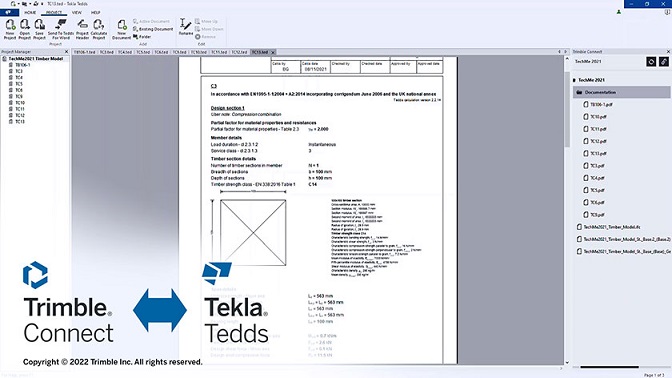
“Tekla software continues to transform the way the construction industry works,” said Michael Evans, Senior Product Director at Trimble’s Structures Division. “Our product development focuses on delivering solutions that make building information more easily available, constructible and shareable to all project stakeholders across the industry to optimize both human resources and materials. Through continuous enhancements, in-product intelligence and expanded support for sustainable construction, our software development keeps us firmly among the most advanced BIM technology platform providers on the market today.”
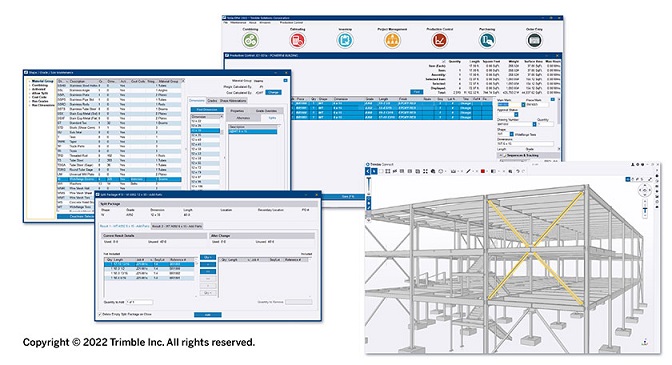
Sustainable Design Choices
Building on Trimble’s dedication to sustainable workflows, Tekla Structures and Tekla Structural Designer now offer dynamic embodied carbon calculation functionality, for both the design and detailing processes, through an Embodied Carbon Calculator. This visual and dynamic calculations tool allows users to quickly and transparently assess the environmental implications of their design choices live within the Tekla software. Structural engineers can use it to compare different design options and their respective carbon loads.
Environmental professionals on design teams can also rely on Tekla’s existing integration with OneClick LCA’s purpose-built carbon calculator for Environmental Product Declarations (EPD) reporting. Combining constructible data from the Tekla software with One Click LCA and its extensive EPD database allows for the embodied carbon emissions of materials in a design—down to every nut, bolt, or rebar—to be calculated for their entire lifecycle.
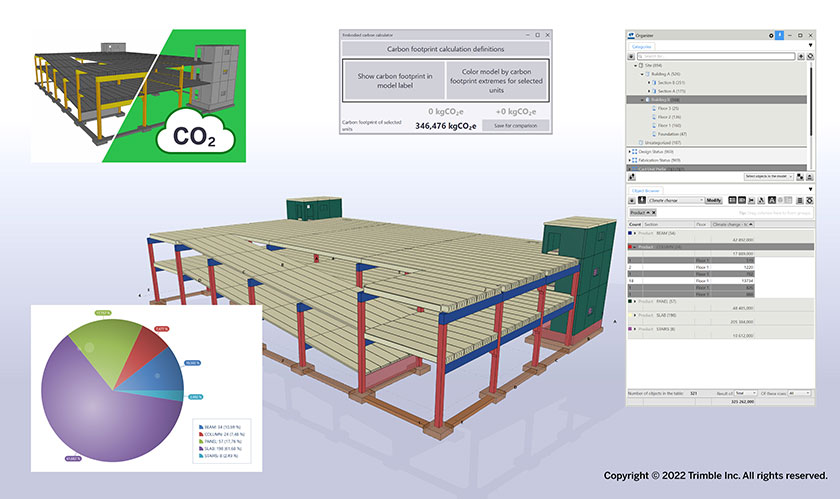
Tekla Structures 2022
Structural BIM software Tekla Structures version 2022 enhances the design-to-fabrication workflow with in-product intelligence to create fabrication drawings, reducing the time spent creating and editing drawings. For the concrete detailing industry, the new Tekla Structures introduces reinforcement (rebar) assemblies. Primarily used in Design for Manufacture and Assembly (DfMA) workflows, this new feature solidifies the Tekla portfolio of automated element fabrication tools. Also new for the 2022 version of Tekla Structures is the inclusion of an Embodied Carbon Calculator extension, offering dynamic calculations and visualization of the CO2 impact of structural design choices to Tekla Structures users.
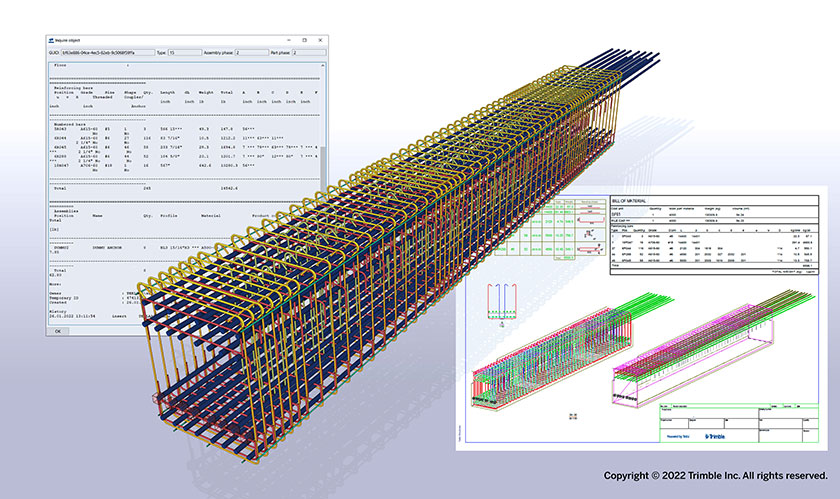
Tekla Structural Designer 2022
The Embodied Carbon Calculator functionality that was already introduced for Tekla Structural Designer in 2021, has now been further enhanced for viewing, reporting and sharing of carbon data. By using Tekla Structural Designer, structural engineers can in the early scheme-design phase calculate the embodied carbon of various alternative proposals, optimizing the design and materials to produce a low-carbon design. The related information is easy to communicate from within the software through reports, charts and data export.
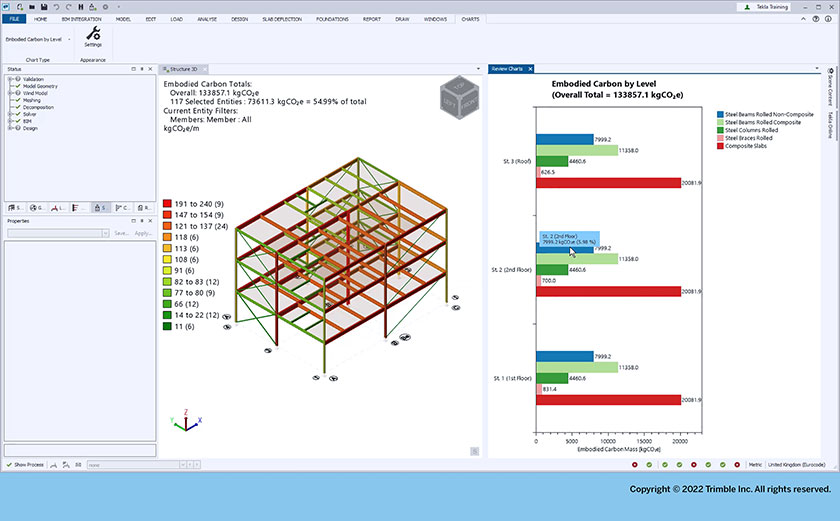
Tekla Tedds 2022
To improve collaborative design-to-detailing workflows, the structural design software Tekla Tedds now allows for easy sharing of structural design information and documentation via the Trimble Connect® collaboration platform. The latest version also includes new calculations and updates to existing calculations for faster, more reliable structural element design.
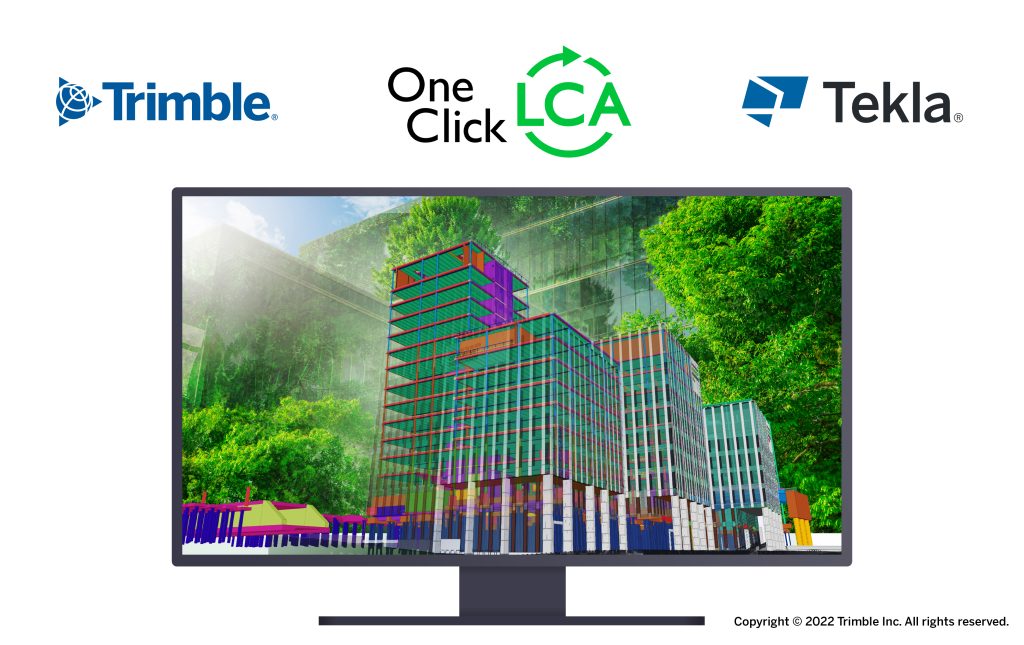
Tekla PowerFab 2022
Steel fabrication management software suite Tekla PowerFab 2022 solves a common engineering problem with enhanced nesting and material management for splicing and splitting. With a streamlined system implementation, new customers can enjoy a smoother migration path from their previously used fabrication Management Information Solution (MIS) to Tekla PowerFab. This helps avoid tedious manual work and supports taking the new system into use with confidence, as the data from past projects is automatically saved, as required. The software also provides improved visibility and control with a new shipping calendar in the web-based Tekla PowerFab Go.






















